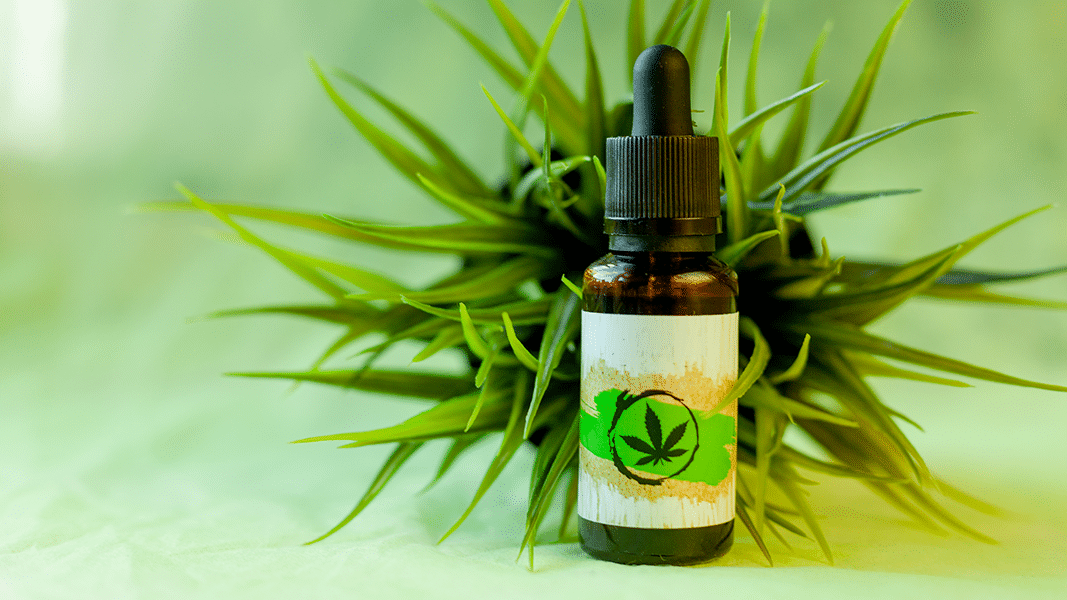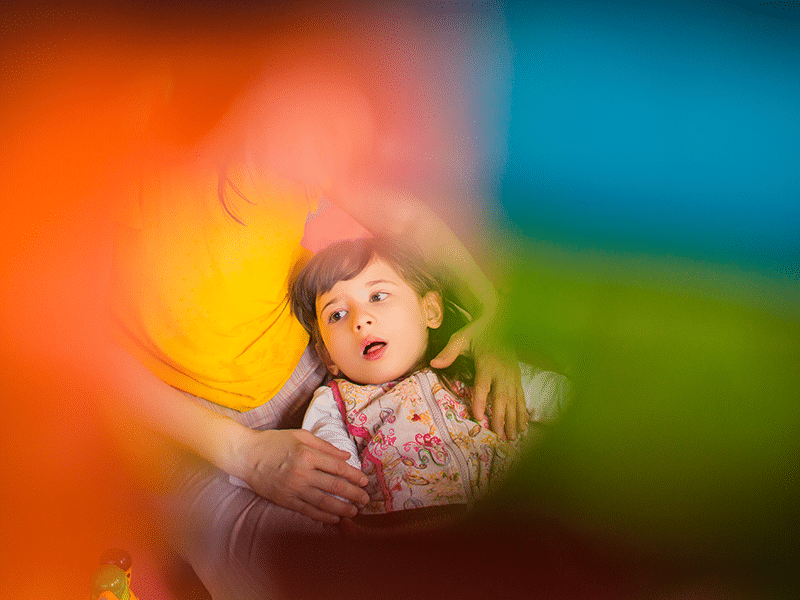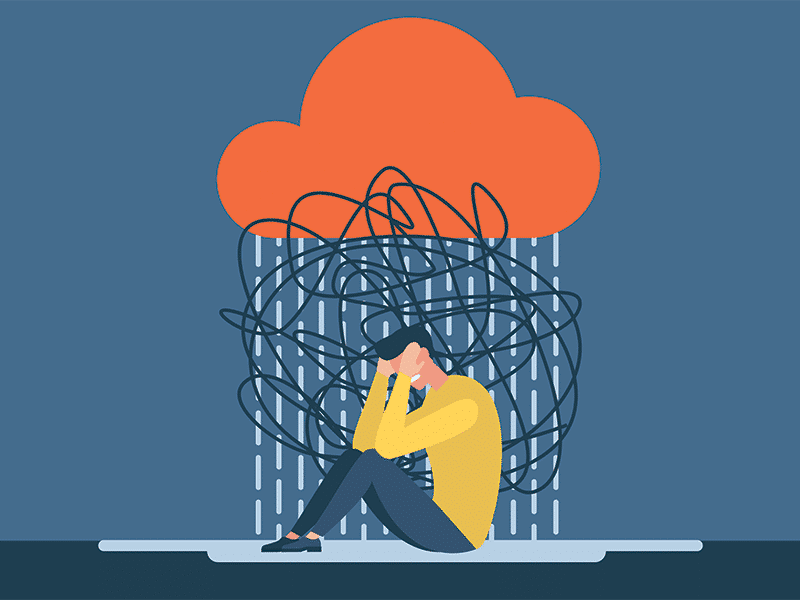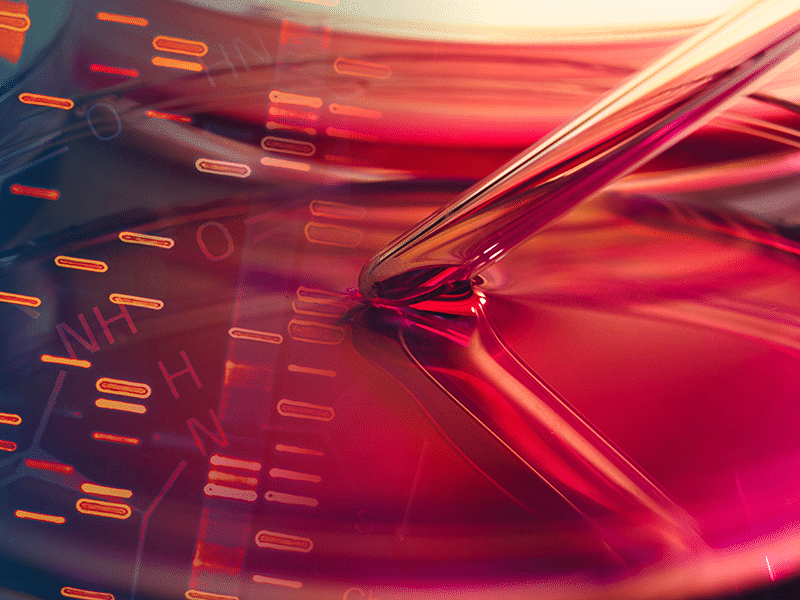Project CBD: Welcome to another edition of Cannabis Conversations. Today we’ll be speaking to Dr. Bonni Goldstein, who’s the medical director of Canna-Centers and author of a book called Cannabis Revealed. An excellent book actually and will be brought out in a new edition, revised, brought up to date next year by a major publisher. Congratulations, Bonni, for that!
Transcript
Goldstein: Thank you.
Project CBD: So Bonni, we are now in the 10th anniversary of the re-introduction of CBD into the medical marijuana community in California. Since that time, CBD has undergone a bit of a transformation culturally – now it’s a huge, it’s like mega-global, it’s a big fad – I’m wondering how has that affected your practice at all?
Goldstein: Well, it’s interesting. I think more and more people are open to medical cannabis as a concept because of CBD. Remember going back many years, we were all kind of trained that THC is bad for you and cannabis is, marijuana is bad for you, and so many people have been propagandized against cannabis. And CBD kind of like opened the door a little bit. And now really opened the door. I think the big question is, is for many of the patients that I see, is CBD enough as a compound in and of itself to be beneficial. Or does CBD need to have all of these other compounds for medical cannabis that come with it, that are there in the plant, that nature gives us.
Project CBD: What are you finding in that regard?
Goldstein: Well it appears that there’s a small subset of the population where either CBD isolate or CBD-dominant with very little THC but maybe some other, the secondary cannabinoids, may be beneficial. But there’s no question in my mind that whole plant, with a more balanced approach, really seems to help more people then just CBD isolate or CBD by itself with a small amount of other plant compounds. I joke around with people that like 100% of patients that come in who’ve already tried CBD have not found that it’s helpful. They’ll say, “oh I’ve tried CBD – it didn’t work.” I hear that all the time. Or, you know “I was waiting for an appointment with you and I put my child on it because we were desperate, and you know it’s just not doing the trick.” Now some of that is the product that they’re using. Some of that is the dosing that they’re using. There appears to be, again, a small number of patients or some subset of the population where a low dose of CBD may be beneficial. It’s very hard to separate out placebo effect from “oh, I’m taking this and everybody tells me…,” “I read online it’s going to help me,” and “everybody tells me it will help me” versus patients who really do need much higher doses for serious medical illnesses.
Project CBD: You mention some of these other compounds, the minor compounds, the minor cannabinoids as they’re called in the plant. Thus far, really since the passage of California medical marijuana in 1996, up until now, it’s either been all THC or CBD has entered the picture and now it’s a matter of mixing CBD and THC; it helps to manage psychoactivity the more CBD the less THC and so forth. But is that all there is? That’s a lot of course, but what are you finding, if at all, in terms of the other components of the plant that you are able to work with?
Goldstein: So here in California, and again it may be true in Colorado or some other of the states that have had laws for a longer time, we have now available CBG (cannabigerol) which is another cannabinoid that has medicinal value – so it’s an analgesic, anti-inflammatory, anti-depressant, it’s a bone stimulant, it’s anti-cancer proliferation. And I’ve been using CBG just about in the past year or so, maybe a little bit longer, in patients who have depression, who do not find benefits with CBD or THC. Also, a large number of my patients (I take care of a lot of children) who have autism are finding that CBG works very nicely for anxiety. So we’ve done some polling with a nonprofit and they’re reporting the number one benefit for CBG in children with autism is less anxiety. And that’s a big, big problem for most people who suffer with autism. We’re also using THCA. And THCA, as you know, is the raw part of the plant that when you heat it up it converts to THC. So, THCA I’m using a lot also in kids with autism. We’re using it as an anti-cancer agent in some patients. For some patients it works beautifully as an anti-nausea. I have patients who have to take certain medications for their life-threatening illness – those medications cause nausea. Well they’re using THC to counteract that. Again, for many people the best part of THCA is low-dose works and it’s not intoxicating so if they want to use it during the day, and THC bothers them during the day, then they can use the THCA.
Project CBD: Maybe you can explain a little bit what that “A” means when it’s attached to THC. Or even, more to the point really, CBDA, and what your experience in that regard has been, if anything.
Goldstein: Sure. So CBDA, again raw form of CBD, so the way that people should think about it is, here’s the flower, right we’ve just cut the flower off the plant, if you test the flower in its raw form before anybody heats it in any way you’re going to have most of the molecules in what we call the “A” forms, the acids. So tetrahydrocannabinolic acid and then cannabidiolic acid, and it’s not like an acid – people always say well is it going to burn me? It’s not that kind of acid. It’s just the chemical structure that allows it to fall into a category of acids. And then what happens is if you heat those compounds, you decarboxylate them, taking off a carbon and a couple of oxygen, and that’s what turns THCA to THC and that’s what turns CBDA to CBD.
Project CBD: And does that really make a difference in terms of the therapeutic properties of these compounds?
Goldstein: That’s a great question. Yes, it does. But there’s overlap because all of these cannabinoids overlap. Both CBD and THC are anti-anxiety. So is CBG now that we’re finding in a lot of patients. Why are all three anti-anxiety? Well that’s the overlap. But it appears like some do better than others. I’m finding that – so we know from studies that both THC and CBD are both anti-nausea. But in clinical practice, I’ll tell you, THC works much better than CBD for anti-nausea. Well THCA works really well for anti-nausea too. But, of course, they work differently because they don’t work at the same exact sites of action in the human brain, in the human body. So when you think about all these different cannabinoids, for instance now we’re talking about five different cannabinoids – THC, CBD, the acid forms of those two, and then CBG – again there’s overlap and redundancies, but at the same time in each specific person they’re going to respond a little bit differently. You may meet people who say, well CBD works great for my anxiety, and then there’s going to be people saying I just didn’t get that result. But then they use another one – CBG maybe, or THC – and they find that that seems to enhance. What’s interesting about THCA and CBDA in terms of clinical practice too, is I am finding that it’s very helpful for inflammatory conditions, especially combining them.
Project CBD: Even more so than the non-acid, the neutral form CBD, THC?
Goldstein: You know, again, it’s always hard to say when you’re comparing a little bit, but the overall sense I’m getting is that the acid forms you can take less and seem to get a pretty good effect. You don’t have to take as much. And, it allows for people to use these compounds daily without having to feel intoxicated.
Project CBD: So THCA is not intoxicating even though THC is. You mention CBG before. Just going back to that because I had another question that came to mind. You spoke about your experience with autistic children, and it seems to lessen anxiety quite a bit. Have you seen similar anxiolytic properties in other contexts, maybe not with children, maybe not with autistic people? Have you had any experience in that regard?
Goldstein: So, in a small percentage of my patients who are adults who I’ve been taking care of for years, who come back every year to re-up or email me and ask questions, every time a new cannabinoid kind of gets on the market, I let people know about it and I’ll say, you know, if you’re still having some breakthrough anxiety, if you’re still have breakthrough pain, you might want to try adding in and just see. I have this saying that I use in my practice: Rule it in or rule it out. I do think that there are a lot of people out there that think that you can just take somebody’s symptoms and then give them some kind of cannabis regimen and that’s what’s going to work. And that’s not really how cannabis medicine works. You want to be able to fine tune and kind of be able to dial in. But now with so many cannabinoids, I tell people it’s worthwhile ruling in or ruling out each one. Seeing if it suits your chemistry. Remember this is complex. We’re taking this really complex plant, right, with hundreds and hundreds and hundreds of compounds that are somewhat redundant and even opposite, right. And then you’re putting it into a very complex human being, and you’re saying oh easily this and this well they stick together. Well that’s not really how it works. It really has to be the patient’s response that kind of dictates where you go next or how you think about dosing. And remember too, that with cannabinoids there are people who respond to very low dose.
I’ll give an example: I had a patient, a little boy, come in with autism, and the parents were desperate. So they tried a little bit – and I say a little bit I mean a really little bit of CBD before they came into my office and they told me that one week on that very low dose (in fact a dose so low that I don’t even ever recommend a dose that low, I always start a little bit higher than that) that the teacher had already noticed the child was doing better. And the teacher did not know he was on CBD oil. But she made like a beeline for the mom one day at the end of school and said, okay what’s going on, what’s different, because it was such a complete benefit. And at that simple tiny low dose, like about 4 or 5 milligrams, they were seeing this incredible benefit in this child. And then I have other patients that are at a complete opposite end. A hundred times that dose, 400 milligrams, a little child with autism. So why is that? Well, we have to remember that this is kind of a changes in your neurotransmitter, this is on a cellular level, this is not something that’s so easy to measure. And there’s no way to tell by somebody’s size or level of illness really exactly what’s going to fit them. It’s the same thing with the different cannabinoids. You’re not going to know until you try and see. Again, rule it in or rule it out.
Project CBD: We might not be able to measure cellular happenings, and yet you see measurable results, sometimes astonishing results, in your practice. What’s always so great to talk to you Dr. Goldstein is, not just the information, but the inspiration. Maybe we can end with an inspiring story of a case that you’ve been involved with recently? Each time we talk there’s new things you tell me that I find so inspiring and so amazing.
Goldstein: Well, a really wonderful story that I hope I don’t jinx by talking about because we’re still in the middle of treatment: I recently had a young woman come to me, a teenager, who had very advanced bone cancer called osteosarcoma. Her cancer was so advanced that it’s actually kind of popping out of the bones through the skin in her legs. She also had a very large metastatic tumor in her lungs that was requiring her — it was inoperable they were told by the time it grew to this size — inoperable, she was on oxygen. She was on pain pills. She came to my office in a wheelchair. I have a patient who I was successful in treating his osteosarcoma with a combination of cannabis plus certain chemotherapeutic agents. In the literature, there’s an article on mice that shows that cannabis plus this particular chemotherapy, that combination, is pretty good at cancer killing, when separately you may not get there. So, this combination seems to work.
So, this young woman, we put her on pretty high doses, and in fact I’m very aggressive when I treat cancer patients, her father was even more aggressive and gave her even more cannabis oil. She’s on a combination of CBG, THC, and CBD. She already has both tumors in the legs like I said were very ugly and big are now not even showing signs of being cancerous anymore. Now it’s just necrotic tissue that her body has to clean up. So her PET Scan, which lights up cancer, is not showing any lighting up. Then the pulmonary tumor, which started off at around 12 centimeters, is now down to half its size. The father is this kind of spectacular thinker, and he figured out – he didn’t want to look at it as a 2D, he wanted to look at it as 3D – and we basically figured out that the tumor in her lungs has shrunk by about 85%. And this is just in six months’ time. She’s out of the wheelchair. She’s off oxygen. She’s off pain medicine. She was able to go back to school in September. And she even made a trip to Colorado to go visit some family and friends. It’s been really an amazing journey.
Project CBD: Maybe one more question. You did speak of using both conventional chemotherapy and cannabis oil together. I think sometimes people are either/or; either one camp or the other. That they’re going to stick with the conventional medicine, they’re not going to give a thought to cannabis; or sometimes it’s really the other way. They want to do the natural way, they won’t consider anything like conventional chemotherapy. Yet what I’m hearing from you is that maybe we should be thinking a little out of that box and consider combining – I’m not asking you to give advice to people who have cancer who might be listening to this video – but maybe you can expound upon that a little bit.
Goldstein: Look, we don’t have the ability to do clinical trials, right. We’re still living in Prohibition, even though here we have it in California and 33 states and then eight states have legalized — but in terms of research and really understanding how cannabis kills cancer. Remember cancer is lots of different diseases, it’s not one disease. So to say cannabis kills cancer is like saying the sky is blue. There’s so much more to it, right. It’s very hard for me, again as a doctor who trained in the sciences, to say well just take cannabis. I mean, I don’t know. So, until we know better, what I say, especially with pediatric cancers, you’re going to throw everything you can. But you want to hang some of your hat on science, right. So, what science do I have? There are a handful of studies that look at cannabis plus some of the chemotherapeutic agents in terms of either cancer killing or in terms of cannabis mitigating some of the side effects of these very toxic medications. And so, when a patient comes in who’s on some traditional chemotherapy I always make sure I do a review of the science and the literature to make sure that we know exactly that we’re not negating them. We don’t want to negate anything that we’re putting in to one person. But look, there’s research now that’s coming out of a pharmaceutical company in Great Britain that is taking some scientific literature from mice, for a very dangerous and deadly cancer of the brain called glioblastoma multiforme, most people may know that as the tumor that John McCain –
Project CBD: It’s pretty much always fatal.
Goldstein: Yes, 15 months under the best care – 15 months from diagnosis to, and after five years maybe 15% of people, if that, are alive. It’s deadly. And we’re not doing a very good job as doctors of getting rid of this cancer. There’s some evidence that these cancers that are in the family of gliomas are very sensitive to cannabinoids, okay. So there’s a study in mice that shows a certain chemotherapy plus cannabis kills cancer. And now there is a pharmaceutical company that has not published the report, one of the reasons I think that they haven’t published (I don’t know firsthand) but my suspicion is because the patients are living. So they did report at the end of one year that 83% of patients who got the combination of CBD, THC and chemo were still alive. Whereas the patients that got chemo alone, 53% were alive. Again, it’s a small group, I think 20 patients. But there’s certainly something there that is statistically significant. Not to mention, that those patients taking THC and CBD seem to have a decent quality of life. It’s not like we’re adding on more toxic chemicals on top.
I think when it comes to the pediatric patients, I try to be very respectful of what the patients are on. I review the literature. I try to make sure that we’re not going to get drug interactions. Unfortunately, even though we are where we are right now in California with cannabis, I’m still — even this week — had a patient that came in who he said my doctor told me I should not give cannabis, in fact she said CBD, to my son with leukemia because they don’t know long-term what it will do to his brain. Well, I know what chemotherapy does to children. We know about 60-70% of children who survive pediatric cancer have significant medical conditions that they have to deal with the rest of their lives. And if cannabis can change some of that, knowing what I know and seeing what I’ve seen now having patients who survive cancer and then only continue with cannabis, they are taken off chemo, they live a great quality of life. And I’m certainly not concerned about their neurocognitive abilities or really any organ damage. It’s kind of amazing.
Project CBD: Inspiring. Thank you very much Dr. Bonni Goldstein. We are signing off now from this edition to Cannabis Conversations. But we look forward to speaking to you again.
Goldstein: Thanks so much, Martin.
© Copyright, Project CBD. May not be reprinted without permission.
Recommended Readings
Autism, Rare Cannabinoids & the ECS
Reporting from the frontlines of cannabis science.
Cannabis, CBD & Anxiety
Could cannabidiol help us cope during stressful times?
Cannabinoids & Cancer in the Clinic
Excerpted from “Healing with Cannabis: The Evolution of the Endocannabinoid System and How Cannabinoids Help Relieve PTSD, Pain, MS, Anxiety, and More” by Cheryl Pellerin.




